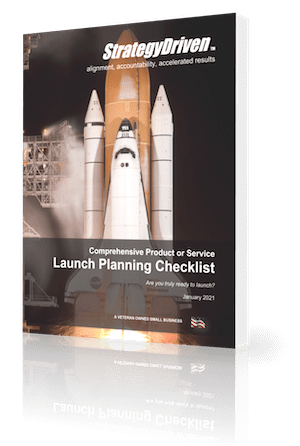Some Of The Best Insurance Tips To Help Manage Construction Risk

Tips:
1. Contract
The construction contract is the number one thing that needs to be ironclad for better risk management. Everything in the contract needs to detail the plan. The contract and its related documents should have the risk allocation plan in them. This includes any insured provisions, exculpation, and indemnity clauses.
2. Builder’s Risk Insurance
This insurance is very important. This type of insurance can be purchased with a much more broad policy that doesn’t have to be overly expensive. With this insurance in place, you can protect yourself from any potential damage that incurs on the site or any lost profits from various problems that could crop up.
3. Don’t Buy Insurance Coverage Unless Necessary
You will want to ensure that you are hiring an experienced and knowledgeable broker. Find someone that has direct experience working with these types of projects. You want someone that has direct knowledge of the work that’s to be done. Someone with experience will know the right questions to ask and they will know how to minimize risk. You will find that some insurance isn’t necessary for specific projects. You want to figure out what insurance is needed and why it’s needed for each project you do. Try not to assume anything on your own. If you don’t know, then you don’t know. You don’t want to purchase insurance if it’s not going to help. You want to save your money for when insurance can help.
4. Read The Policy
Don’t make the mistake of not looking over the policy. You want to read the policy right when you get it. Reading the policy and going over it will help you figure out what it covers and what it doesn’t. There is no substitute for reading it. You need to do the legwork to ensure that you know what you are getting into. You cannot rely on the certificate. You need to read the policy yourself and try to comprehend what it entails. Anyone that is a policyholder needs to know what they are signing up for. You want to read it as soon as possible and reject it if the terms aren’t to your liking. You want to ensure that the policy matches what you were told.
5. Mind Your Prepositions
There was at least one court that ended up ruling that a blanket additional insured endorsement did not necessarily extend the coverage to someone who was a prime contractor of the project. This is true even though the holder of the policy agreed to extend the coverage within the contract itself. They even issued a certificate of insurance showcasing that there was mutually agreed insurance in place. The court ruled that the prime contractor is a legal entity to whom the holder agreed to extend coverage, but it didn’t meet the legal “with whom” requirement that was set forth within the policy.
6. Be Crystal Clear About Who Qualifies As “Another Party”
The majority of CGL insurance policies don’t offer coverage for contract-based claims. The exception is where the claim comes out of an “insured contract” agreement. This is an agreement where the holder of the policy assumed the liability of “another party” to pay for any resulting property damage or personal injury to someone deemed a third party. Some courts have narrowed the view of what qualifies as “another party.” This is typically used as an exception in a contract and it’s usually limited to the holder’s contractual counter-party. This ends up excluding the insurance coverage for a GC’s liability to the owner coming from any third-party negligence. This is true even though the GC assumed the liability in the original contract. This is a situation that should be handled through an endorsement amending the contractual definition of “insured contract.”
7. Understand The Restrictions In Endorsements
The coverage can be restricted in numerous ways when it comes to additional insured endorsements. One of the newer changes is the limiting of how much coverage was available to those who are additional insured. There are limits in place and anyone deemed additional insured could access more significant policy limits by clearly specifying within the contract that the greater number would apply when comparing the minimum specified and the actual limits.
8. Keep An Eye On Waivers Of Subrogation
This is something that can end up relinquishing the right to recover from various losses that would normally be covered under the insurance policy. This is sometimes an action that takes place between a couple or more parties that are involved in a construction project. It’s important to be wary of these because some of the policies out there will end up penalizing the holder of the policy for waiving subrogation. You want to ensure that everyone involved is doing it properly.
9. Excess Of Wrap-Up Endorsement
This is something that can bring a lot of benefits to everyone involved. It can help with the risk management of a construction project. Contractor-controlled insurance programs or “wrap-ups” can help to minimize finger-pointing, help with cost savings, and more. However, you do need to understand the limits of wrap-ups and that they are equally shared among those involved. Thus, they may not necessarily be the best option to protect the interests of everyone involved with the construction project. A lot of the newer corporate insurance programs have some wrap-up exclusions attached. Therefore, you’ll want to speak with your hired broker to endorse your insurance program to apply excess wrap-ups if you do participate.
10. Ensure Your Risk Management Matches The Scope Of The Project
You need to ensure that your risk management is scaled properly with the project itself. Keep in mind, that the “guaranteed maximum price” is not going to be any more guaranteed than something deemed an “all-in lump sum.” The price that ends up getting paid out is always subject to expansion. It can also be subject to a reduction in some cases. You need to look at the work needed and ensure that all of the risks are mitigated. When deemed appropriate, try to transfer the risk to the insurance. You want to attempt to get “claw-back” provisions in place if the total cost of the future work insured isn’t yet known.











Leave a Reply
Want to join the discussion?Feel free to contribute!